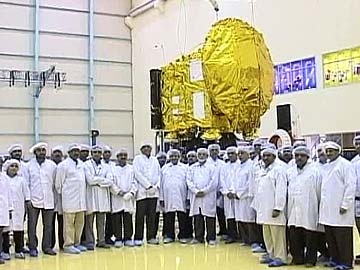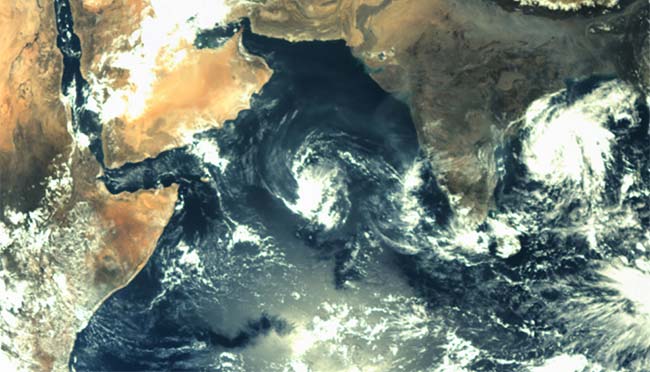Nine days ago India’s space mission termed Mangalyaan, the voyage
towards the planet Mars, was launched. It was what one calls a
“textbook” launch with zero error, and one that has made India say “Yes,
we can”. And in 300 days, it will have covered 680 million kilometres
to orbit the Red Planet on September 24, 2014. Once that happens, it
will start analysing the surface of the planet for any methane, a gas
which is believed to hint at the presence of any Martian biology or life
forms.
It is a proud moment in the history of India, a nation that started its
space programme just about 50 years ago, or to put it in another way,
with the “Chutzpah” of a teenage nation. With the Mangalyaan experiment,
some say that India has “arrived” as a member of technically advanced
nations.
Yet some voices have been raised in the country about whether this is
worth it, whether it is a meaningless bombast, and whether this money of
Rs 460 crores spent on Mangalyan could not have been used to feed the
starving millions across the country. India is a land of stark
contrasts. Half the people here live on less than two dollars a day, of
which many are estimated to live on even less than Rupees 30 a day.
To this, the criticism, the Space Commission Chairman Dr K Radhakrishnan responded saying that every rupee spent here benefits people all across India. To put it in perspective, he said that Mangalyan cost each of us 115 crore Indians about Rupees Four.
What has the “aam admi” got out of these four rupees; or even forty or
four hundred, counting over the year? Plenty! Recall how Indian
satellites hovering around us give us real time information on weather,
information to fishermen and coastal farmers on the tides and fish
flock, on the state of ships and other vessels near and far from the
coast, carry radio and TV waves, and most of all help in saving lives of
millions.
Thanks to help from our space programme, the loss of lives in the recent
cyclone Phanini was limited to 44 and almost a million people were
saved by prior evacuation. Earlier cyclones, when we did not have this
facility of early warning killed tens of thousands. Yes, but why to
Mars? Herein is where the idea of development becomes important. India
is still thought of as a “developing nation”, once ridiculed as a “ship
to mouth” economy.
How does development occur? When and how does a country become “developed”?
Development has multiple components: proper food, clothing and shelter
for the people; adequate education and culture; good health; good
environment; equal opportunity for all; ability to defend from enemies;
economic stability and growth; and above all, good governance, all
leading to a feeling of justifiable national pride. If you look at any
one of these above components, technology plays a vital role in it.
Technology comes out of logical, scientific and rational thought and its
application. The greatest thing about technology is that it is scalable
to millions, it becomes cheap and affordable once it is spread,
demanded and used; it can thus offer convenience and progress for the
entire nation. Thanks to technology, we have now moved from “ship to
mouth” to a “silo to ship” economy, and we rid ourselves of smallpox and
polio, and are vaccinating all children against some common childhood
diseases. It is here that Mangalyan is relevant. The 460 crores
expenditure has several useful effects. We are using the latest
technology, indeed creating new ones, and at a frugal cost. Mars
missions by European or American countries would be at least thrice
costlier. And the design, building, testing and setting up have all been
done by Indian engineers. Only some vital components are imported. It
has thus led us to be self-sufficient and advanced our capabilities. The
technological prowess to aim for Mars means that we can apply it, and
even better it for terrestrial needs at home. It also brings us business
(recall that we pack the payloads of other countries in our
satellites). It has captured the imagination of youngsters (over 2 lakh
“likes” on Facebook by 18-21 year-olds). Mangalyan thus is a tool to
attract youth and advance science.
It is therefore not an expense but an investment for the future. Today
it is Mars, tomorrow even greater challenges. Should India not be ready?
Mars is thus a metaphor.
Should these 460 crores not have been spent on feeding the poor? Look at
the larger picture. The budget of India for the year 2013-14 is Rs
16,65,297 crores; this amounts to an individual amount of about Rs
14,500 per person. We have budgeted Rs 27,049 crores for agriculture (Rs
235 per Indian), plus Rs 33,000 crores on the Mahatma Gandhi National
Rural Employment Guarantee Act or MGNREGA, to help the rural poor, which
is another Rs 280 per person.
Money is thus earmarked and distributed to help the rural poor
(Mangalyan has not taken away even a rupee out of these allocations).
Despite these efforts, there are large holes in the programme, thanks to
inefficient governance.
If we can tighten this up, complaint about feeding the poor will be far
less or can even vanish. Here too, technology helps through efficiency,
cutting out the middlemen and so forth. Compared to these, Rs 460 crores
on Mangalyan, or Rs 4 per Indian (about an onion or two) is not just a
grand bargain but a steal!

